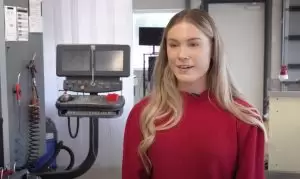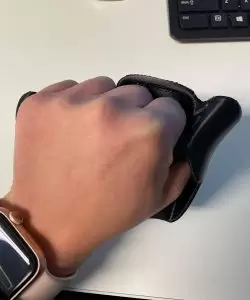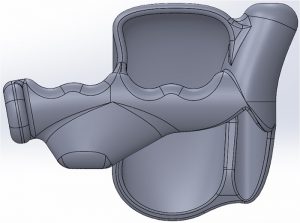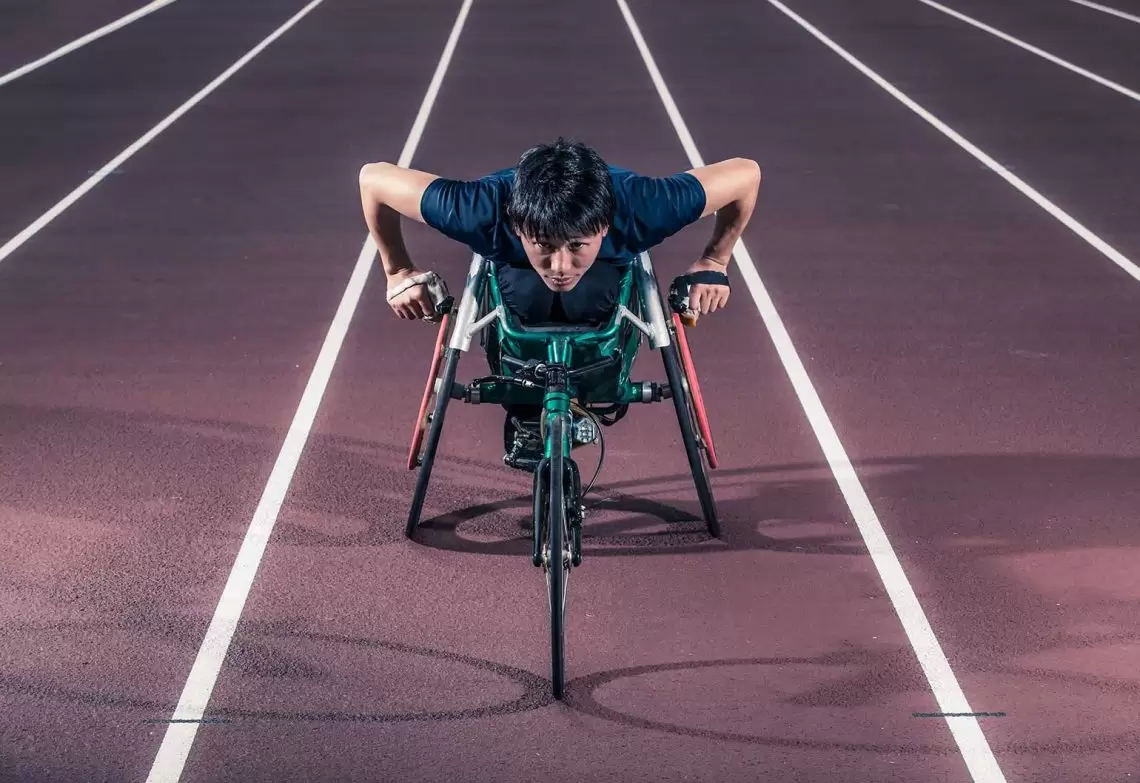Wheelchair racing gloves designed by an engineering student could give aspiring Paralympians access to gear usually reserved for elite athletes.
Australian National University honours student Tess Henman is creating a parametric model for the gloves as part of a placement with the Australian Institute of Sport.
She aims to use key hand measurements — such as hand breadth and length —to generate a glove design that could be manufactured on a 3D printer.
If successful, the project would give developing athletes access to customised equipment usually reserved for the world’s elite Paralympians.

Henman said wheelchair racers use the hard gloves to push the rims of the chair in a ‘punching’ motion.
As well as protecting the hand, the gloves help athletes to propel the chair forward and maintain control of the wheels at high speeds.
Race gloves are considered the most important piece of kit for wheelchair racers other than the chair itself — comparable to shoes in a running race.
Junior athletes often create hard gloves from commercially-available thermoplastic resin beads, Henman said, that they or their coach melt in hot water and mould around their hand.
But moulding the beads is a tedious process, and there are a lot of concerns with the final product.
“The resulting shape and material properties aren’t very good,” Henman said. “There can often be significant inconsistencies between the left and right gloves.
“And the biggest concern [is] that if the athlete needs to replace them, it’s impossible to create a new pair that feel and perform the same as the original.”


Other racing gloves available online are expensive and only come in generic sizes.
“Those address some of the concerns of the hand-moulded ones, but they lack that customisation,” Henman said.
“There’s no real middle ground at the moment, except for the ones that are produced for elite athletes, which obviously [aren’t] accessible to every single wheelchair racer in the country.”
Setting the parameters
To come up with parameters for the gloves, Henman dived deep into anthropometric databases.
She ruled out a lot of interrelated hand measurements before settling on six parameters.
“The two key ones are the hand length and hand breadth,” she said. “If you think about it, that defines the envelope of the hand.”
 Other measurements — such as thumb length and finger width — make sure nothing gets jammed in the glove.
Other measurements — such as thumb length and finger width — make sure nothing gets jammed in the glove.
Henman said the biggest hurdle has been working out how to model such an organically-shaped object from a collection of structural shapes.
“That’s definitely been the biggest struggle, and I wouldn’t say I’ve overcome that yet,” she said.
“Working out a way to make it look so organic but also be compliant when the parameters change. And have that model be rigid enough to be able to be parameterised.”
But by adding elements like finger grooves, the model is slowly starting to look more like the moulded products.
Once she’s happy with the glove shape, Henman said the next step is to look at different material choices and print settings.
She hopes athletes will one day be able to enter their hand measurements online, and have her model generate custom gloves that are then printed and posted to them.
Optimising performance
For Henman, it’s a dream to be able to combine her passion for sport and engineering.
She said it’s rewarding to be involved in a project that can benefit young athletes, and she loves seeing how her designs could improve the performance of competitors.
“The most exciting thing about building something like this from the ground up is that some elements of research can start to be implemented as well,” Henman said.
One area she’s looking at is the optimal grip diameter based on hand length. She hopes to work out the best shape for power generation.
“For the hand-moulded ones, for example, usually you’re just moulding it to what you think looks right or feels comfortable,” Henman said.
“But by actually building the model, you can… add in some features that you know, from a research point of view, will actually optimise performance.”




Hello Michelle ,
I have a new wheelchair Athlete who is struggling to find suitable gloves to meet his needs. He is also carrying a torn sheath in his forearm which is posing problems. Would your design help with his push technique to protect the tear along with protecting his thumb?
We have tried a few different methods and the loan gloves he currently have are falling apart.
Any advise support woulf be greatly appreciated.